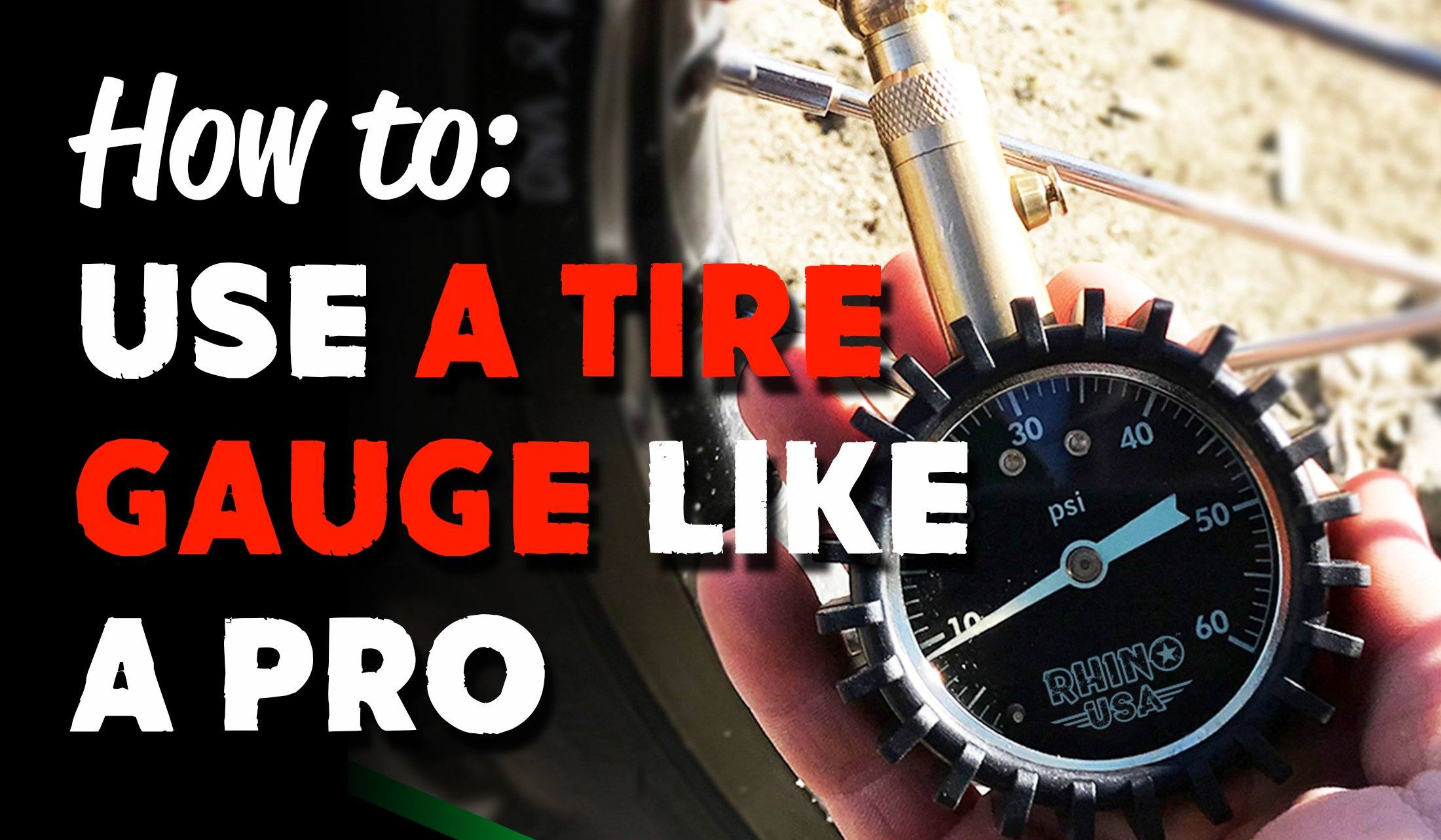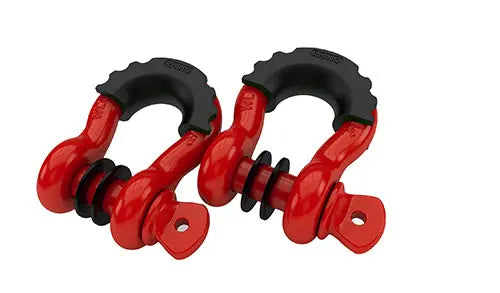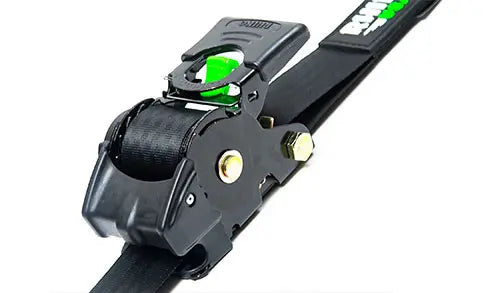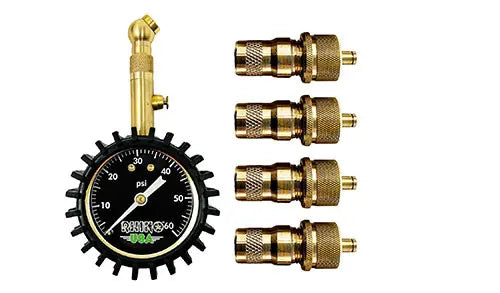
How to Use a Tire Pressure Gauge Like a Pro
Your vehicle performance depends on many factors, one of the most important being the air pressure in your tires. Keeping your tires filled properly will not only delay wear and tear, but also improve fuel economy. Tire air pressure is often overlooked by drivers and can be easily measured with a high-quality portable tire pressure gauge.
Featured Product: Rhino USA Tire Pressure Gauge
Tire air pressure changes naturally every season. During a hot summer, your tire pressure will rise by approximately 10 degrees Fahrenheit. Whereas a cold winter, you can expect the opposite.
This is one of the many reasons keeping a tire pressure gauge on hand is important. You never know when you might need one. In this article, we are going to teach you how to check your tire pressure. A fairly simple task that, once learned, you will never need to relearn.
What is a Tire Gauge?
A tire pressure gauge is a tool for accurately measuring the air pressure in your tires. Most newer vehicles come equipped with a TPMS. However, it is unlikely that it gives you an individual reading for each tire. This is where a Tire Gauge comes into play.
For 25 cents, you can use a tire gauge at a Gas Station. However, these gas station gauges have been "used and abused" overtime and do not always give an accurate reading. The alternative would be to invest $10-30 into your very own gauge. They are small tools and can be stored almost anywhere – like your vehicle's glove compartment, for example.
Types of Tire Pressure Gauges
There are many different types of tire pressure gauges, although each one serves the same general purpose. Some people prefer the digital tire gauge, while some, the analog gauge. You can read about the different types below.
The Analog Tire Gauge: This gauge is commonly touted to be more accurate than its counterparts. With a round shape, a shock-resistant cover, a braided hose, a bleeder valve, and a solid brass needle, this gauge far outweighs the others in terms of quality. The design features a dial that measures PSI in units, which can be slightly more difficult to read than say – a digital tire pressure gauge.
Quality comes with a price. These gauges typically cost $10-20 and need to be stored in a safe, non-bumpy environment. The reason being is that when shaken, the inner pieces can become damaged or loose over time.

The Digital Tire Gauge: This gauge is more advanced in design, and tends to be a popular customer choice. It is smaller than the analog gauge and comes equipped with a bright LCD display. This makes it the optimal choice for checking the air pressure in dimly lit environments.
Aside from design, these gauges live a long and useful life. These battery-powered gauges use so little energy that you will never worry about battery replacement. These gauges range from $5-15, making them more affordable than the alternative analog tire pressure gauge.
The Stick Gauge: By far the most compact is the stick / pen gauge. These gauges are very thin in size, and are very easy to use. Oftentimes, they do not give the most accurate reading. That should not deter you from owning one though. They do make for a decent backup in the scenario that you do not have a better gauge available.
Digital vs Analog Tire Pressure Gauges
When it comes to checking tire pressure like a pro, one of the first decisions you'll face is whether to use a digital or analog tire pressure gauge. Each type has its own set of advantages and considerations. In this section, we'll explore the differences between these two options to help you make an informed choice. These are the pros and cons of a digital pressure gauge vs. analog tire pressure gauge:
Digital Tire Pressure Gauges:
- Accurate and easy to read.
- User-friendly with digital displays.
- May have extra features but requires batteries.
- Vary in price but generally affordable.
- Some models may be less durable.
Analog Tire Pressure Gauges:
- Simple and durable mechanical design.
- No batteries needed.
- Easy to calibrate for long-term accuracy.
- Available in various price ranges.
- Less precise but highly reliable.
Your choice depends on your priorities. Digital gauges offer precision and ease, while analog gauges are durable and battery-free. Both help maintain tire safety and performance.
How to Use a Tire Pressure Gauge
Using a tire gauge is a relatively simple task. Once you learn it, you will likely never need to learn it again. Although sometimes it may be nice to get a refresher if it has been a while since you last used one.
Below we will walk you through step-by-step on using a tire gauge.
- Remove the dust cap from the tire valve.
- Attach the tire gauge to the tire valve.
- Press the gauge air-tight against the valve.
- Wait for an accurate air pressure reading.
There you have it. You now understand everything you need to know about tire pressure gauges. We hope this article was helpful and informative. If you ever need help using a tire gauge, call us at +1 (800) 575-7310 to speak to a friendly team member that would be more than happy to assist you.
Rhino USA's gauges are certified for accuracy, and shipped in custom molded foam packaging that prevents the damage or loosening of parts during transport. You can view our different types of tire gauges by visiting our online store.
 Tire Pressure Gauge FAQ's
Tire Pressure Gauge FAQ's
How to read a tire pressure gauge?
-
Attach the Gauge: Put the gauge nozzle on the valve stem of your tire.
-
Read the Display: If it's a digital gauge, it will show you the pressure in numbers (for example, 32.5 PSI). If it's an analog gauge, look at where the needle points on the dial.
-
Compare to Recommended Pressure: Check your vehicle's manual or the door jam sticker for the recommended tire pressure.
-
Adjust if Needed: If it's too low, add air. If it's too high, release some air until it matches the recommended pressure.
-
Replace the Valve Cap: Don't forget to put the valve cap back on to keep out dirt and debris and repeat this process with all four tires, as they may have different pressure requirements.
How accurate are tire pressure gauges?
The accuracy of tire pressure gauges can vary depending on their quality, design, and calibration. In the case of Rhino USA tire pressure gauges, they are known to be highly accurate for on and off-road use, and they are certified ANSI B40.1 Accurate.
However, it's essential to note that the accuracy of any tire pressure gauge can change over time due to factors such as wear and tear, exposure to extreme temperatures, and rough handling. To maintain accuracy, it's recommended to periodically calibrate your gauge and replace it if it becomes damaged or unreliable
- Choosing a selection results in a full page refresh.








